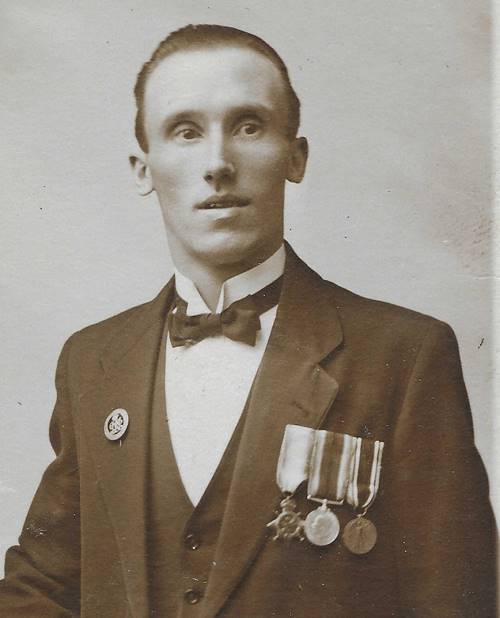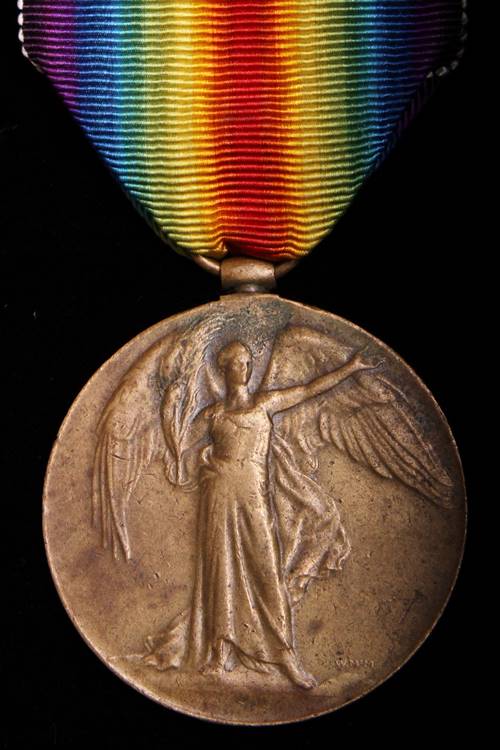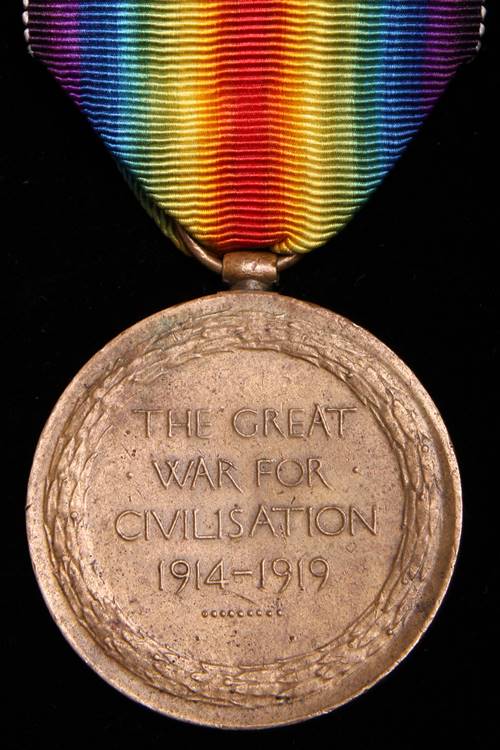This article is about the First World War Victory Medal and will explain how a soldier qualified for the medal, provide a description of the Victory Medal and help you to find its records. I have also written articles on the other campaign medals of the First World War which can be viewed by clicking the links below:
The First World War Victory Medal
The Victory Medal was awarded to all servicemen and women who served in a theatre of war between 5th August 1914 and 11th November 1918 and automatically qualified its recipient for the British War Medal. The Victory Medal was never awarded on its own. Soldiers continued to be eligible for the medal post-Armistice if they served in Trans-Caspia (present-day Turkmenistan) and northern Russian in 1919. If a soldier was mentioned in despatches, then a single oak leaf clasp could be worn on the medal’s ribbon. The medal is also known as the Allied Victory Medal and was born out of the idea to issue a medal for all the Allied nations, with Victory on the obverse. Though, the Japanese version had Taskemikazuchi and the Siam (Thai) medal had a different design. The rainbow-coloured ribbon is a blend of all the flags of the Allied nations to represent their unity.
The riband (ribbon) of the medal was authorized for wearing from September 1919 onwards, after that of the British War Medal. It would take some time for the ribbons to be distributed, so it is likely that a photograph showing a Victory Medal ribbon dates from late 1919 onwards. The medal was officially worn to the right of the British War Medal but they are sometimes seen the wrong way round. The photograph below shows a veteran wearing either a 1914 or 1914/15 Star, British War Medal and Victory Medal. He was also wearing a Silver War Badge to show that he was a honourably discharged veteran of the war. This photograph was taken at a christening and dates from at least 1920 onwards.
Description of the Victory Medal
Obverse: Winged figure of Victory clutching a palm branch (symbolizing victory and triumph) with her right hand while extending her left arm.
Reverse: A wreath surrounding “THE GREAT WAR FOR CIVILISATION 1914-1919”. The South African version was bilingual with the above in Afrikaan “DE GROTE OORLOG VOOR DE BESCHAVING 1914-1919”.
Size: 36 mm.
Metal: 84.5% Copper and 15.5% Zinc.
Naming: The medal is named in impressed capitals around the rim.
Number Issued: 5.75 Million.
Designer: William McMillan, whose initials WMcM can be seen next to Victory’s left foot.
Records for the WW1 Victory Medal
There are two sets of records for the Victory Medal, a Medal Index Card and the corresponding British War Medal and Victory Medal Roll. If a soldier qualified for the 1914-15 or 1914 Star, then there will be another roll for this medal. These documents will record a lot of information regarding a soldier’s service and for many, they are the only surviving documents left of a soldier’s service. Both records can be viewed on Ancestry, with the Medal Index Card usually free to view and download. While the Medal Index Card is also available to download from the National Archives, it is in black and white and the reserve wasn’t copied. Also, they charge a small fee for each card.



